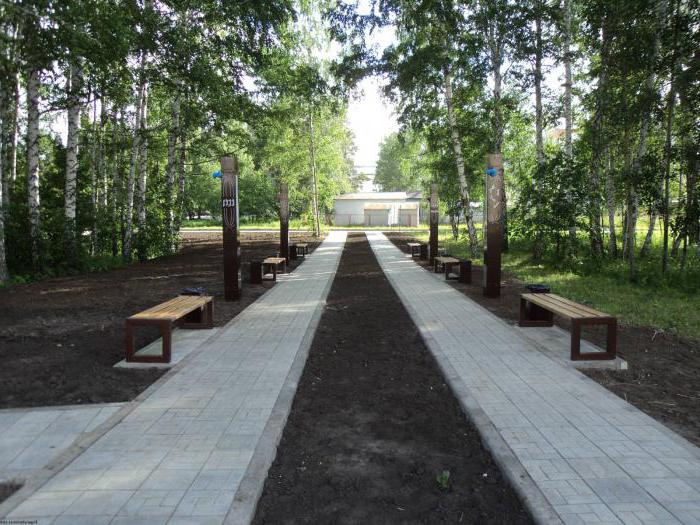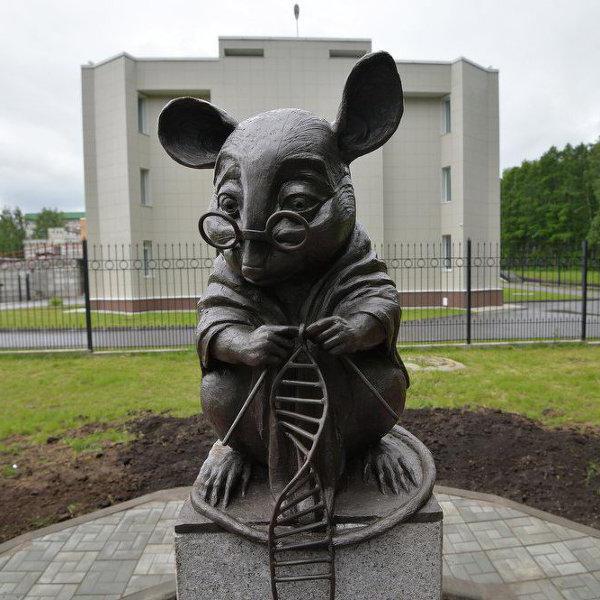Monuments are usually erected to great people or in honor of special events. But sculptures in honor of animals are not set up very often and still surprise the public. Did you know, for example, that in Russia there is a monument to a laboratory mouse?
Anniversary of laboratory mice
Which animals most often help scientists make new discoveries? We are undoubtedly talking about laboratory mice, which as a special subspecies celebrated their centenary in 2009. However, if we turn to history, it is easy to notice that these animals were used in science earlier. It is known for certain that experiments on mice were carried out already in the nineteenth century. Why is the year 1909 considered the year of the beginning of the “mouse” history? It's simple: to obtain reliable data, experiments should be carried out on genetically identical individuals. It is believed that the first conclusion of such mice by inbreeding (crossing individuals closely related) for scientific purposes was taken by Clarence Cook Lit. The scientist received the first line of animals suitable for experiments, namely in 1909. Since then, this method has been used to raise animals that help to make scientific discoveries.
The monument to be
Novosibirsk Academgorodok is a place where scientists of various industries and areas work. One of the significant objects of the complex is the Institute of Cytology and Genetics SB RAS. In this institution, most discoveries are made through the use of laboratory animals. There is even a separate SPF Vivarium (a separate building in which researchers breed and grow laboratory mice and other experimental animals). It was in front of this building that it was decided to erect a monument to a laboratory mouse. The first draft of the monument was ready back in 2005, it was an animal sitting on a huge human hand. However, due to difficulties with the final approval of the selected layout and problems with financing, the sculpture was never created.
Monument to the laboratory mouse: description and history of creation

They decided to install a new sculpture for the anniversary of the city, namely for the 120th anniversary. The design of the sketch for the future creation was entrusted to the artist Andrei Kharkevich, who prepared about ten different sketches in record time. Among them was a monument to a laboratory mouse knitting a DNA strand. This image was not chosen by chance; it represents the golden mean between a realistic look of an animal and a cartoony image. The mouse sits on a granite pedestal and holds in its paws knitting needles with which it knits a DNA molecule. The animal is dressed in a lab coat and glasses. This image of the Novosibirsk academic campus, including local scientific authorities, was enthusiastically greeted. This mouse symbolizes both the scientist and his relatives involved in the experiments, which can be interpreted as perpetuating the union of people and animals for the benefit of the development of science. The artist emphasizes that he tried to portray the moment of discovery. In his opinion, the emotions on the "face" of the mouse are read at first glance, it seems, another second and she will say: "Eureka!" The sculpture is made of bronze by a famous master - Maxim Petrov. The monument was cast in Tyumen, the pedestal is made of granite. All work was completed on time, and on July 1, 2013, the grand opening of the installed monument took place.
Interesting facts and superstitions related to the monument

Today, a mouse, an astringent DNA molecule, is the central sculpture in the whole sculptural composition that adorns the territory of the Institute of Cytology and Genetics, SB RAS. Today, the science mall is completely dedicated to animals that help people in research. On benches and urns you can also see images of a rabbit, rat, frog, dog, pig, hamster and even Drosophila. All these animals participated in various studies, helping people find cures for once deadly diseases and receive important information about the structure and functioning of organs and tissues of living organisms. The laboratory mouse monument is not just a decoration of the square, but a reminder of the contribution of these mammals to science and an expression of gratitude. Residents of the city like the new sculpture, and students even ask her for help in passing exams. It is believed that you need to stand next to the mouse or hold on to a DNA molecule, and then the five is guaranteed in any classification. Everyone likes the new decoration of the academic town, and undoubtedly, one of the most unusual sights of the city is the monument to the laboratory mouse. Novosibirsk is a city quite large and rich in beautiful sculptures and unusual places, but if you decide to visit it, be sure to include a visit to the scientific alley near the Institute of Cytology and Genetics of the SB RAS in your tourist route.